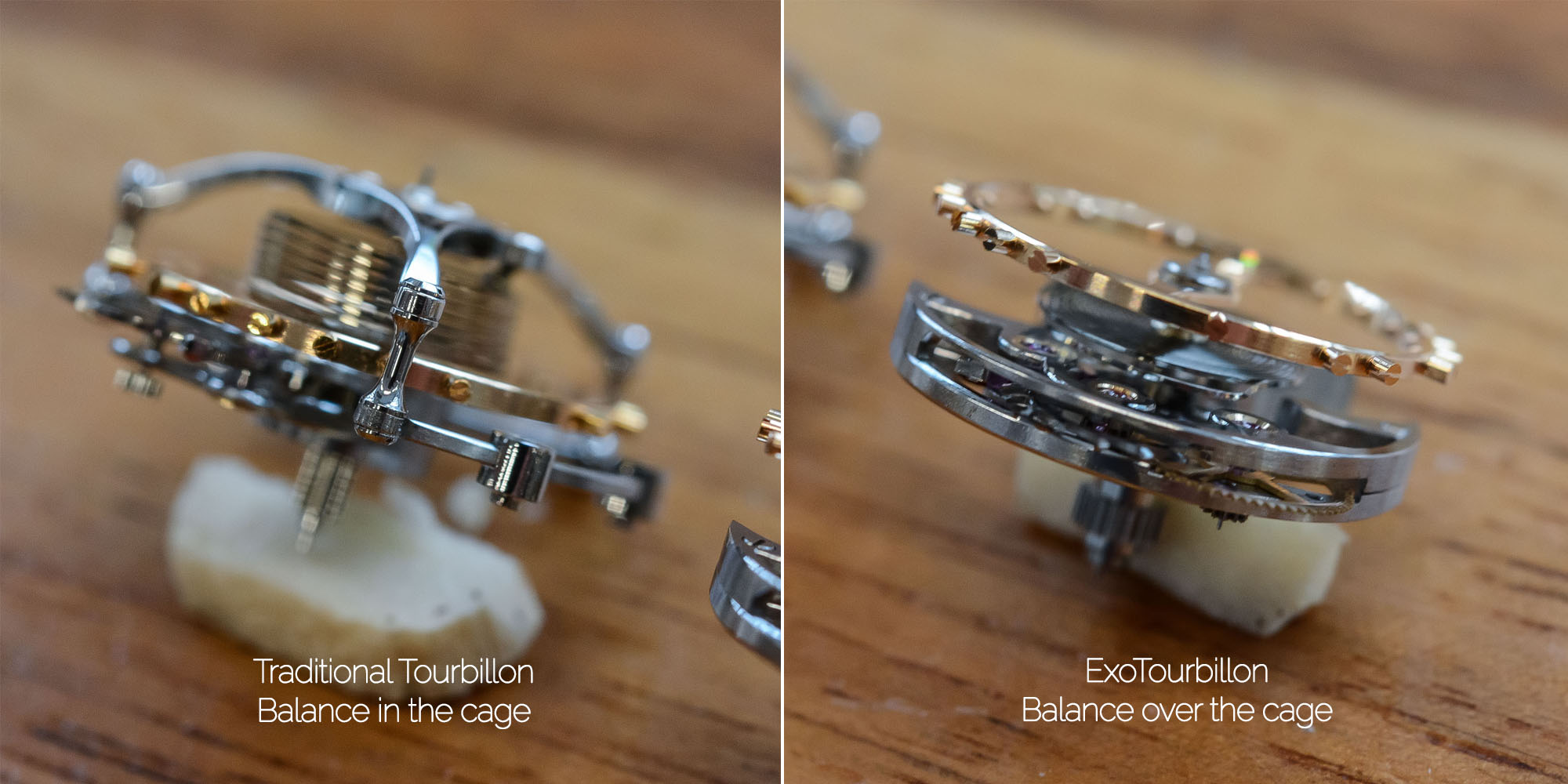The Montblanc Patented ExoTourbillon explained by Davide Cerrato, managing director of the Montblanc Watch Division
In January of this year, at the SIHH 2016, Montblanc continued to impress with good looking and pleasantly priced watches. The ExoTourbillon Slim, an elegant, luxurious and technically complex timepiece, which includes the brand’s patented tourbillon, the ExoTourbillon. This watch not only features a tourbillon regulator that clearly stands out from the crowd, but it is also an extremely good “value for money” offer matching the accessible luxury motto of Montblanc. At Monochrome Watches we love to explain the nitty gritty technicalities in details and this summer we traveled to Villeret, Switzerland, and asked Davide Cerrato, the recently appointed Managing Director of Montblanc Watch Division, to tell us everything about the ExoTourbillon.
Sit back and relax, as Davide Cerrato explains the ExoTourbillon in this 10 minute video…
Why such a focus on the Montblanc Patented ExoTourbillon? Well, this tourbillon is not just another tourbillon. This tourbillon is different from all the others that you’ve seen before. The ExoTourbillon is what makes this watch slimmer, more efficient, less complex to manufacture, potentially more precise and finally, more accessible for collectors, considering its competitive retail price. The Montblanc Patented ExoTourbillon has been developed with the same goal as every other tourbillon: to offset gravity effects on the balance spring, and by doing that to achieve a greater precision, in all possible positions. What makes a tourbillon? Basically, a tourbillon is a device that comprises the balance wheel, balance spring, anchor and the escapement wheel, and all that is enclosed in a cage. That case rotates on 360 degrees in (usually) one minute. Thus, as the regulating organ of the watch is never in a static position, the gravitational effect is exactly the same in all positions, and therefore it can be disregarded. The Montblanc Patented ExoTourbillon achieves the exact same result and also rotates on its own axis once per minute, however there’s a difference!
The Montblanc 4810 ExoTourbillon Slim, introduced at the SIHH 2016
What differs is the construction of the module itself. To explain a complex subject, we need an expert. This is why we decided to go to the Montblanc Manufacture in Villeret, to visit the facilities and ateliers, and we had long conversation with Davide Cerrato, the recently appointed Managing Director of Montblanc Watch Division. If we analyze a traditional tourbillon, we can see that the balance wheel and the escapement are placed inside a cage that rotates around its own axis. Besides smoothing out the negative gravitational effects, this also has some other consequences…
Bear in mind that the larger the balance wheel is, the better the isochronism is, and the more precise a watch indicates time.
A dilemma when designing a tourbillon….
- the balance wheel is large and therefore, the cage is even larger, and heavier, and subsequently this construction consumes a lot of space in the movement and a lot of energy;
- the balance wheel is small and the cage is smaller and lighter (compared to option 1)
While option 1 offers the better precision of the larger balance wheel, which gets void due to the weight (energy consumption) of the tourbillon, while option 2 consumes less energy, has less friction, it also offers less precision due to the small balance wheel.
The Montblanc Patented ExoTourbillon takes the balance wheel out of the cage of the tourbillon. The result is a smaller cage that is lighter and subsequently consumes less energy. The first effect is simple: with a regulating organ consuming less energy, the watch has a longer power reserve. This construction also allows for a better resistance to shocks, meaning that the ExoTourbillon can be used more safely on a daily basis and becomes less of a showcase piece.
The specific architecture of the Montblanc Patented ExoTourbillon implies the advantages of a (relatively) small tourbillon cage and a large balance wheel can be combined. As said, a larger balance wheel has stable inertia, which results in better precision of timekeeping.
The ExoTourbillon also allows to have a large screwed balance! This not only has a strong historical link to the tradition of watchmaking, something that will please collectors, it also offers a better way to regulate the watch and (again) achieve better precision.
The final technical advantage to have the balance wheel outside the cage is the ability to implement a simple but reliable stop-second mechanism, which help to adjust the watch to the second. With the balance wheel being placed outside the cage, watchmakers implemented a whip, which can stop the whole tourbillon, by blocking the balance wheel (thanks to its screws)
Once implemented in a watch, the advantage of the Montblanc ExoTourbillon goes further. The smaller tourbillon cage can easily be combined with a micro-rotor for automatic winding. The movement of the Montblanc 4810 ExoTourbillon Slim measures only 4.4mm in thickness, and is one of the slimmest automatic tourbillon movements available on the market.
The latest characteristic of this tourbillon is its relative simplicity of construction and assembly, and that results in a more affordable retail price. The Montblanc 4810 ExoTourbillon Slim comes at a price of € 35,000 Euros, and compared to other tourbillon watches available on the market, that’s not bad! And it comes in an 18k gold case, with a lovely guilloche dial, and everything is finished absolutely superb.
In a next video with Davide Cerrato we will focus on the hand finishing that is done at the Montblanc manufacture in Villeret. montblanc.com.







